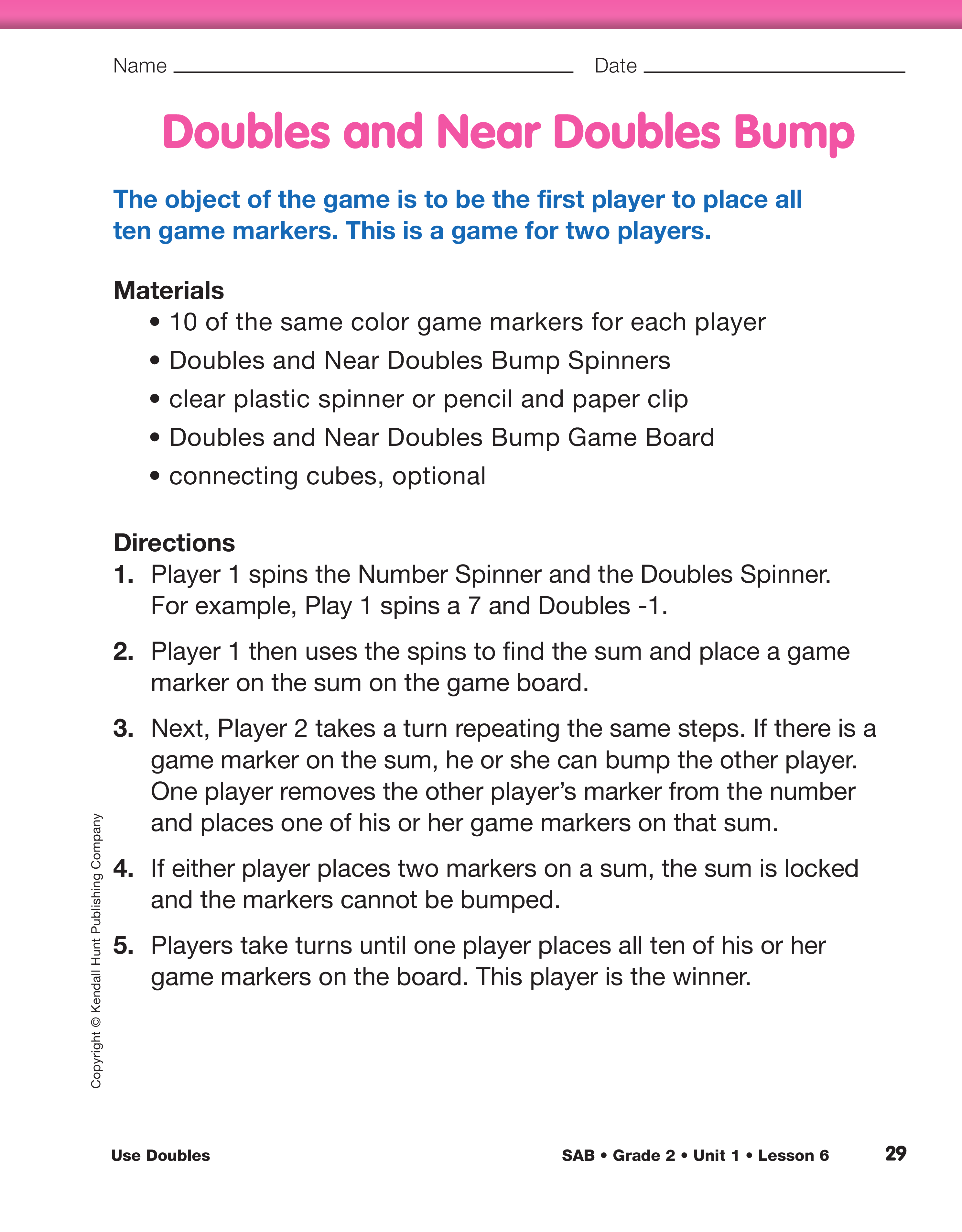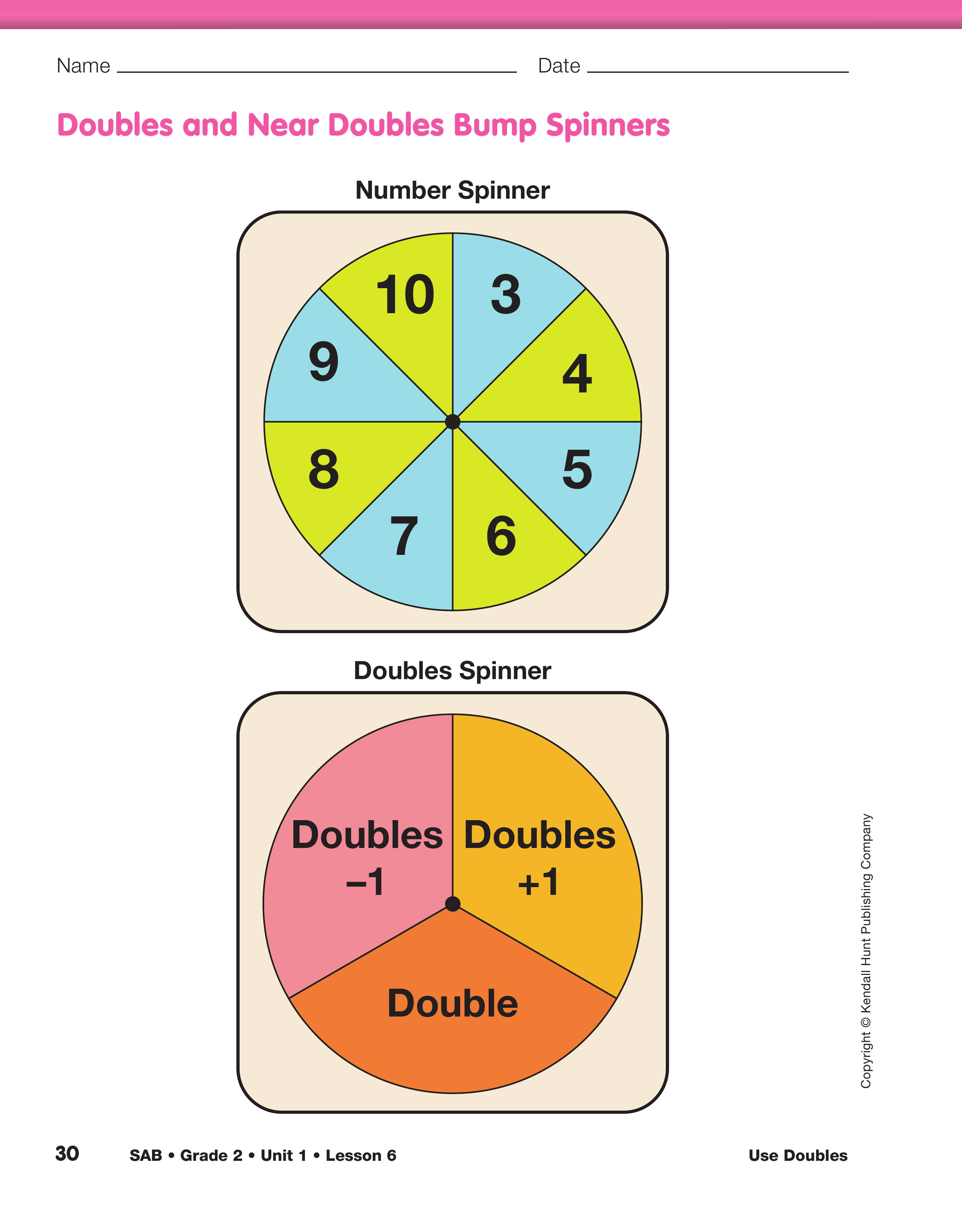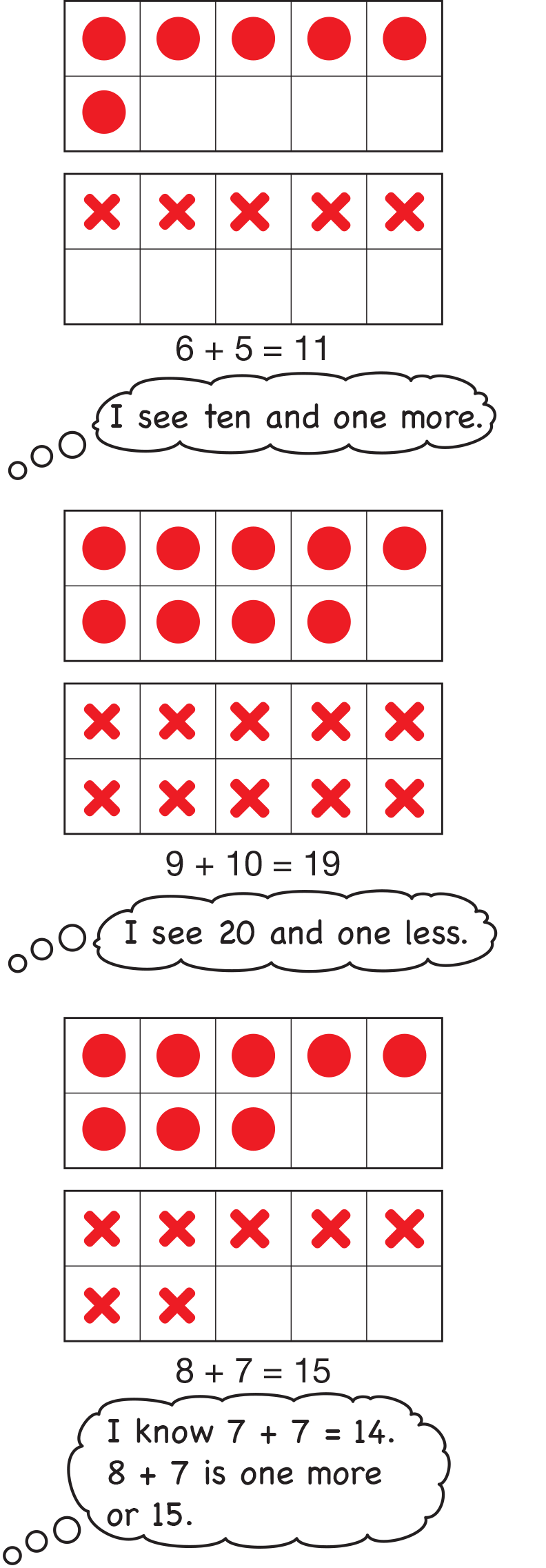Use Doubles
Est. Class Sessions: 2Developing the Lesson
Part 2: Develop Strategies for Doubles and Near Doubles
Use Ten Frames to See Doubles. For this part of the lesson you will need the display set of Doubles and Near Doubles Ten Frames Cards Masters. Show students the card that represents 5 + 5.
Ask:
Now show students the card that represents 4 + 4.
Ask:
Continue this discussion of strategies with other cards showing doubles. See Figure 7 for examples of strategies.
Use Ten Frames to See Near Doubles. Show students the card that represents 5 + 6.
Ask:
Continue this discussion of strategies with other cards showing near doubles. See Figure 8 for examples of strategies.
Give each group of four students a prepared set of the Doubles and Near Doubles Ten Frames Cards Masters. Each student takes a card from the set and the remaining cards are placed in the middle of the table. Then each student finds the sum on his or her card and shares the strategy for finding the sum. Have students take turns sharing their problem and strategy. Ask groups to repeat this process by selecting different cards.
Practice Solving Doubles and Near Doubles. Display the Doubles and Near Doubles Bump Game Board and Doubles and Near Doubles Bump Spinners from the Doubles and Near Doubles Bump pages in the Student Activity Book. Place the spinner or a paper clip and pencil on the desk near the display and have connecting cubes available to demonstrate how to use them to solve problems if necessary. Select a student volunteer to help you demonstrate the game. After demonstrating a few turns, distribute materials to student pairs and have students play the game.


















